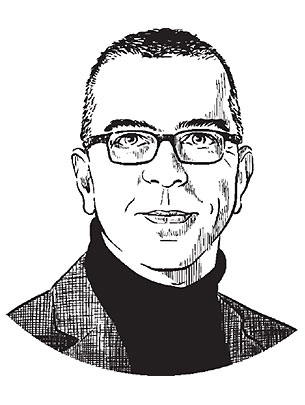What does the future of money look like, Axel Paul?
Text: Axel Paul
The money economy is currently undergoing a period of rapid change, thanks to digitization. Cash as we know it will disappear. But what consequences is that going to have?
They say that it’s hard to make predictions, especially when it comes to the future. However, three trends seem to me to be indisputable. First, cash will disappear, to be replaced by payment using apps installed on our smartphones. One of the driving forces behind this change is our desire for convenience, which leads us to transfer even very undemanding tasks like handling cash on to our mobiles. Another is the economic interest of the IT and fi nancial sectors in making payment itself into a business, controlling how it is conducted, levying charges on it, and marketing the data that have been captured from it.
It is possible to see the disappearance of cash as just another change in the form that money takes. There have been many such changes historically, such as the shift from coins to bills. However, it is tied up with the loss of anonymity of those involved, which is an essential feature of trading in civil society. A person who uses cash leaves no traces. When someone makes a payment electronically, on the other hand, they do so in their own name. Many people will not fi nd that worrying. Still, when cash disappears, it will take with it the freedom of the individual to be just a buyer, and ultimately, their right to be treated equally as a participant in the market.
A second trend is the growth of complementary currencies. These are not totally new; in some respects, they have a long history. These alternative currencies are complementary because the aim of their creators and users is to plug the gaps in a currency system that they see as defective, due to its dependence on transregional markets and use of excessively high interest rates (or even interest per se). The flaw in the system whereby conventional money operates as a barrier to market access is to be overcome by people agreeing to provide everyday goods and basic services, generally, in return for a means of exchange accepted only in a particular locality or region. First, we are seeing not just an expansion in the currency
First, we are seeing not just an expansion in the currency supply, but the development of separate sectoral currencies for specific jobs. This is because local or complementary currencies function only as means of exchange, not as units of value or assets. Alternatives have long been available to perform this monetary function, too. Bitcoin is just one of them. Secondly, complementary currencies are an expression of the repersonalization of economic life, if not of money itself. They are symptomatic of an attempt to embed all too anonymous market processes in the familiar setting of everyday life.
The third trend is that our monetary system itself is coming under fi re. On the one hand, a coalition of libertarians, hackers and start-ups have taken it upon themselves to undermine the state monopoly on currency by inventing and disseminating cryptocurrencies. We are promised a kind of money that is free not just from state oversight, but from political attempts to manipulate it. On the other hand, there are complaints that our currency system has long been open to private abuse. In fact, it is the private commercial banks, not the central banks, that decide how much money is created and, consequently, how wealth is distributed.
In the eurozone, money has become a political bone of contention partly due to the policies of the European Central Bank, which has managed to rescue the euro, but only by exceeding its mandate – which it continues to do. As a result, troubled times lie ahead for monetary policy. We will have to learn to think in more than one currency.
More articles in the current issue of UNI NOVA.

